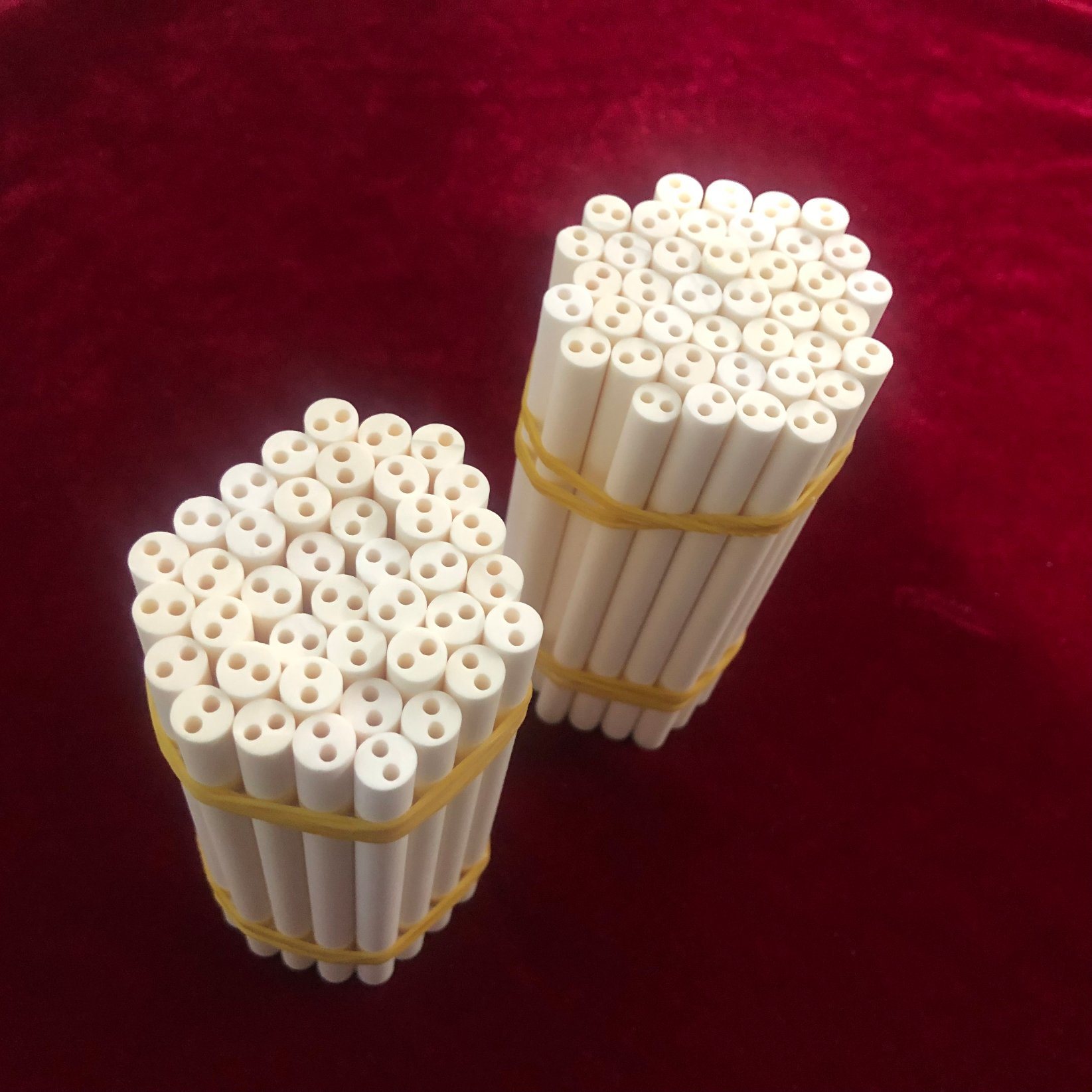A Game-Changer in High-Temperature Applications

Alumina ceramics have long been known for their remarkable properties, such as high hardness, excellent thermal stability, and resistance to wear and corrosion. Among the various alumina ceramic products, the Industrial Alumina Ceramic 2-Hole Tube stands out as a critical component in many industrial applications. These tubes are widely used in high-temperature environments, particularly for housing thermocouples and other electrical instrumentation. Their unique properties make them ideal for demanding tasks in industries such as metallurgy, aerospace, and energy production.
Key Features of the Industrial Alumina Ceramic 2-Hole Tube
1. High Thermal Stability: One of the standout characteristics of alumina ceramics is their ability to withstand extreme temperatures. The Industrial Alumina Ceramic 2-Hole Tube can maintain its structural integrity at temperatures exceeding 1600°C, making it ideal for high-temperature applications. This ability to function in harsh environments without losing performance ensures that critical operations can continue smoothly.
2. Excellent Electrical Insulation: With their two-hole configuration, these tubes are designed specifically for housing electrical wires, including thermocouples. Alumina ceramic is an excellent insulator, preventing electrical interference and ensuring accurate readings in sensitive environments. This makes them ideal for use in situations where precise temperature measurements are crucial, such as in industrial furnaces or reactors.
3. Wear and Corrosion Resistance: Alumina ceramic is known for its superior resistance to chemical attacks and mechanical wear. This property is particularly advantageous in harsh industrial settings where the tubes are exposed to corrosive substances or abrasive materials. The 2-hole tubes are able to maintain their performance over extended periods, reducing the need for frequent replacements and thereby lowering operational costs.
4. Dimensional Stability: These ceramic tubes exhibit excellent dimensional stability, even under fluctuating temperature conditions. This means that the tube maintains its shape, ensuring that the thermocouples or other components housed within it remain protected and function optimally.
5. Lightweight but Durable: Despite their robust performance, alumina ceramic tubes are relatively lightweight, which simplifies their installation and integration into existing systems. Their durability ensures that they can withstand the mechanical stresses often encountered in industrial environments.
Applications of the Industrial Alumina Ceramic 2-Hole Tube
1. Metallurgy: In the steel and metal production industries, precise temperature control is essential for producing high-quality materials. These tubes protect thermocouples that monitor temperatures in furnaces, ensuring accurate readings and helping to maintain optimal operating conditions.
2. Aerospace: The aerospace industry requires materials that can withstand extreme conditions, both in terms of temperature and mechanical stress. Alumina ceramic 2-hole tubes are used to house sensors that monitor temperatures in engines and other critical components, ensuring that operations remain safe and efficient.
3. Energy Production: In power plants and other energy-producing facilities, maintaining the correct operating temperature is essential for efficiency and safety. The 2-hole tubes help protect the sensitive equipment that monitors these conditions, enabling more accurate and reliable performance in extreme environments.
4. Chemical Processing: The resistance of alumina ceramic to chemical corrosion makes these tubes ideal for use in chemical plants, where they protect thermocouples and other sensors from aggressive chemicals and high temperatures.
5. Laboratory Equipment: In research and development labs, precision is paramount. Alumina ceramic 2-hole tubes are used to house thermocouples in experimental setups where high-temperature conditions are simulated. Their reliability and accuracy ensure that researchers obtain precise data.
Advantages Over Alternative Materials
Compared to other materials such as quartz, steel, or even some high-temperature polymers, alumina ceramic offers several distinct advantages. Quartz, for instance, may offer good thermal stability, but it lacks the mechanical strength and wear resistance of alumina ceramic. Steel, while strong, is not a good electrical insulator and can corrode over time, particularly in harsh chemical environments. High-temperature polymers can degrade under extreme heat, making them unsuitable for long-term use in high-temperature applications.
Alumina ceramic, on the other hand, offers a balanced combination of thermal, mechanical, and chemical stability, making it a more durable and reliable choice. The 2-hole configuration specifically enhances the tube’s functionality in electrical insulation and sensor protection, providing a specialized solution that other materials simply cannot match.
Conclusion
The Industrial Alumina Ceramic 2-Hole Tube represents a significant advancement in materials engineering, offering an ideal solution for high-temperature and electrically sensitive applications. Its combination of thermal stability, electrical insulation, and resistance to wear and corrosion makes it an indispensable component in a wide range of industries. Whether in metallurgy, aerospace, energy production, or chemical processing, the alumina ceramic 2-hole tube is helping to improve operational efficiency, reduce downtime, and enhance the overall performance of industrial systems.
As industries continue to push the boundaries of what is possible in extreme environments, products like the Industrial Alumina Ceramic 2-Hole Tube will play an increasingly important role. With its proven reliability and unmatched performance, this advanced ceramic component is poised to remain a key player in the future of high-temperature industrial applications.

